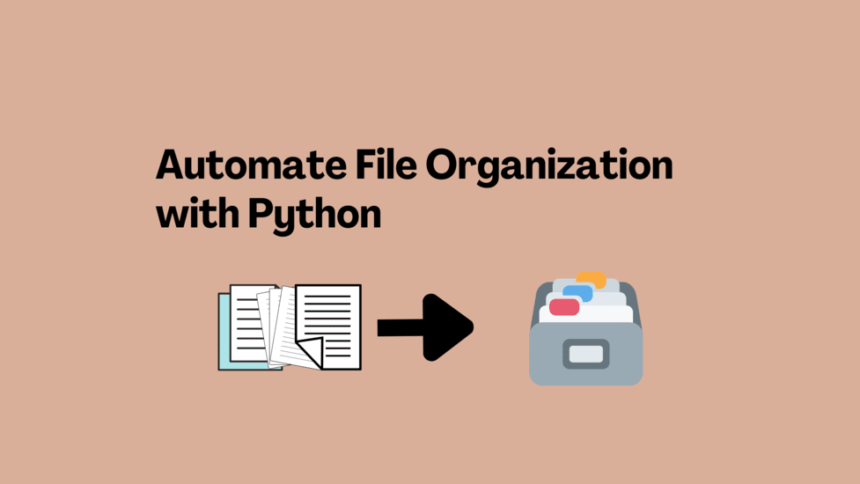Intro – Automate File Organization with Python
In today’s digital age, we’re constantly bombarded with files—documents, images, videos, and more. Over time, this digital chaos can make it difficult to find what you need when you need it. Enter Python, the versatile programming language that can come to your rescue. In this article, we’ll introduce you to a simple yet powerful Python script that can help you regain control over your files and keep your digital life organized.
The Challenge of File Management
We’ve all been there: a cluttered Downloads folder filled with files with cryptic names like “document_v3_final.docx” or “IMG_20230123.jpg.” Finding the right file can be a frustrating and time-consuming task, especially if you have a lot of files.

The Solution: Automating File Organization
Python, a popular programming language for tasks ranging from web development to data analysis, can also be an excellent tool for file organization. We’ve created a Python script that automates the process of sorting and organizing files based on their file extensions. Here’s why this script can be a game-changer:
- Saves Time: Manually sorting files into folders can be tedious, especially if you have a large number of files. With automation, you can accomplish the same task in seconds.
- Reduces Clutter: By categorizing files into subfolders based on their types (e.g., documents, images, videos), you’ll enjoy a cleaner and more organized file system.
- Easy Retrieval: Finding the right file becomes a breeze when they are neatly organized. No more endless scrolling or searching through cluttered folders.
- Prevents Data Loss: Misplacing important files is a common issue. This script helps you avoid accidentally deleting or misplacing crucial files.
The Python Script
We’ve prepared a simple Python script that you can use to start organizing your files today. Here’s how it works:
import os
import shutil
# Define the directory you want to organize
source_directory = '/path/to/source_directory'
# D://testing
# Create a function to organize files
def organize_files(directory):
# Iterate through all files in the source directory
for filename in os.listdir(directory):
if os.path.isfile(os.path.join(directory, filename)):
# Get the file extension (e.g., '.txt', '.jpg')
file_extension = os.path.splitext(filename)[1]
# Create a subfolder if it doesn't exist
subfolder = os.path.join(directory, file_extension[1:])
if not os.path.exists(subfolder):
os.makedirs(subfolder)
# Move the file to the corresponding subfolder
shutil.move(os.path.join(directory, filename), os.path.join(subfolder, filename))
if __name__ == "__main__":
organize_files(source_directory)
print("File organization completed.")
Replace '/path/to/source_directory' with the actual path of the directory you want to organize. When you run this script, it will create subfolders for each unique file extension found in the source directory and move the files into those subfolders accordingly.
💁 Check out our other articles😃
👉 Generate a free Developer Portfolio website with AI prompts
👉 Creating a Toggle Switcher with Happy and Sad Faces using HTML, CSS, and JavaScript
Conclusion
In a world where digital clutter can easily overwhelm us, Python comes to the rescue with its automation capabilities. With just a few lines of code, you can save time, reduce clutter, and make your files easily accessible. Whether you’re a professional managing work-related documents or an individual with a personal collection of photos and files, this Python script is a valuable tool to keep your digital life organized.
Don’t let the chaos of digital files slow you down—take control with Python and enjoy a more organized and efficient workflow.









